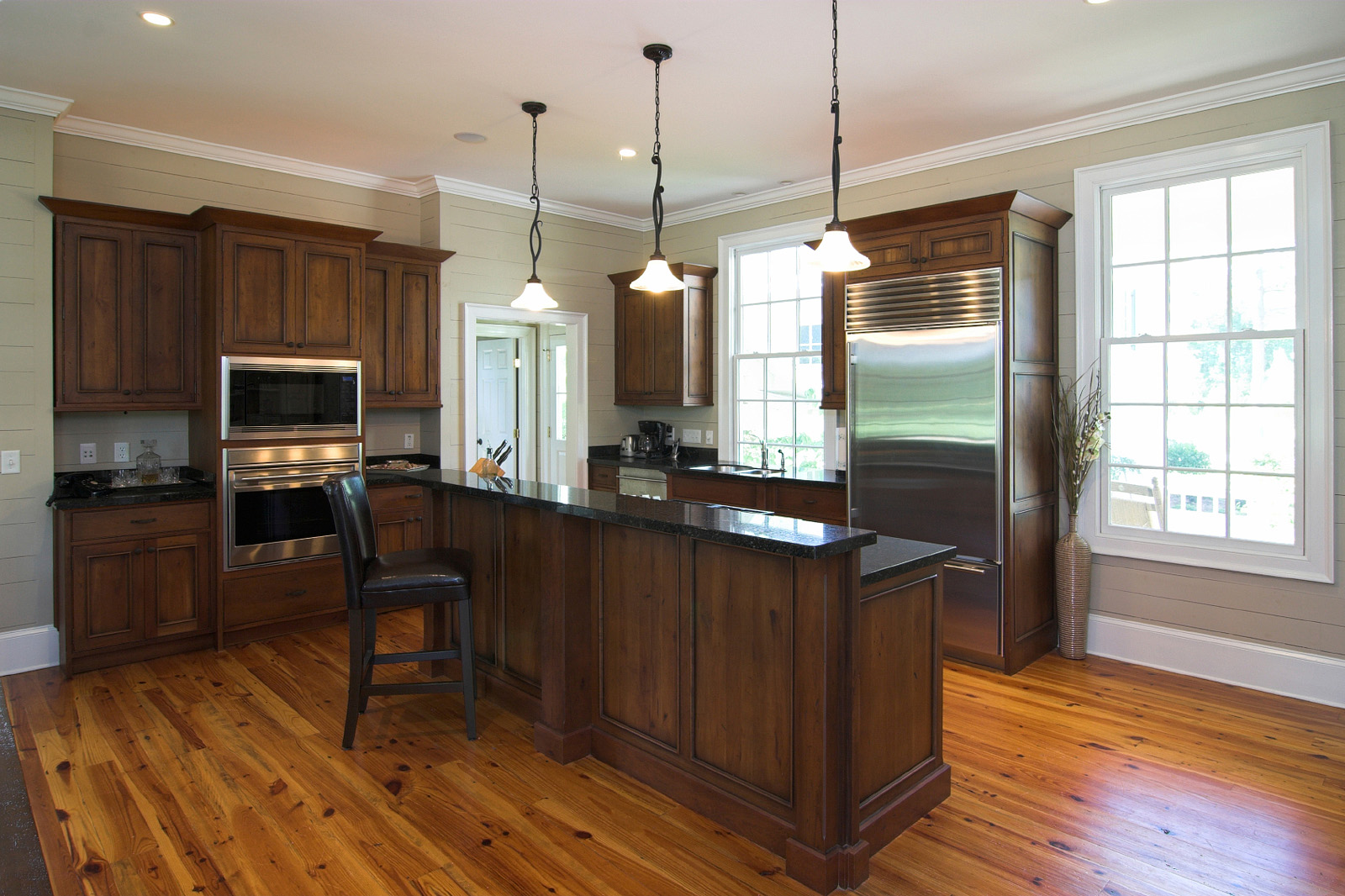Imagine this: You’re envisioning your dream kitchen. Beautiful countertops, sleek appliances, and a space that feels both stylish and inviting. But then you hit a snag – the flooring. You love the elegant look of hardwood, but the price tag makes your heart sink. What’s a budget-conscious homeowner to do? Enter laminate flooring, a versatile and affordable option that can bring your kitchen design dreams to life…but is it truly a good fit for a high-traffic, moisture-prone room like your kitchen?

Image: www.verymeinteriors.uk
Let’s be honest, the kitchen is the heart of the home. It’s where we cook, eat, gather, and create memories. And while the idea of laminate in the kitchen might seem unconventional, you might be surprised at how well it can hold up against the stresses of daily life. This article dives deep into the pros and cons of laminate flooring in the kitchen to help you decide if it’s the right choice for your home.
The Upsides of Laminate Flooring in the Kitchen:
Affordable Elegance: Laminate flooring is lauded for its impressive ability to imitate the look of natural materials like wood, stone, and tile at a fraction of the cost. You can enjoy the warmth and sophistication of hardwood without breaking your budget.
Durability and Scratch Resistance: Laminate flooring is surprisingly resilient. It’s designed to withstand heavy foot traffic, dropped pots and pans, and even the occasional spilled glass of wine. That’s because its core is composed of a high-density fiberboard that’s protected by a wear-resistant layer on top.
Easy Installation and Maintenance: If you’re a DIY enthusiast, laminate flooring is a friend indeed. It comes in easy-to-install planks or tiles that click together like a puzzle. As for upkeep, laminate flooring requires minimal fuss. Sweeping and damp mopping are usually all that’s needed to keep it looking pristine.
Water-Resistant Options: The days of laminate being susceptible to water damage are long gone. Many modern laminate flooring products are now offered with a moisture-resistant core and a durable, sealant-like layer that prevents water from seeping in.
Wide Range of Styles and Colors: Laminate flooring is available in an endless array of styles, colors, and patterns that cater to every taste and design aesthetic. From rustic wood planks to contemporary concrete tiles, there’s a design to perfectly complement your kitchen’s décor.
Considerations for Using Laminate Flooring in the Kitchen:
Water Sensitivity: Despite advances in moisture-resistant technology, it’s essential to remember that laminate flooring is not truly waterproof. While it can handle spills and splashes, prolonged exposure to standing water can cause damage.
Potential for Damage: Although laminate flooring is durable, it’s not invincible. Sharp objects, heavy furniture, and excessive use of cleaning chemicals can still scratch or mark the surface.
Lack of Authenticity: While laminate flooring is adept at mimicking natural materials, it doesn’t offer the same level of authenticity as the real thing. If you’re a purist who values the unique character and beauty of natural wood or stone, laminate might not meet your expectations.
Resale Value: While laminate flooring can add aesthetic appeal to your kitchen, it may not increase your home’s resale value as significantly as real hardwood.
Choosing the Right Laminate Flooring for Your Kitchen:
Water Resistance is Key: Be sure to choose a laminate flooring product specifically designed for moisture-resistant applications. Look for features like a “waterproof” or “water-resistant” core, and consider a laminate flooring with a sealed surface for added protection.
Durability Matters: Select a laminate flooring with a high abrasion rating (AC rating). A higher AC rating indicates greater durability and resistance to scratches and dents.
Invest in Quality Installation: The quality of your laminate flooring installation plays a huge role in its longevity and performance. Consider hiring a professional installer to ensure proper subfloor preparation and a secure and watertight installation.
Consider Additional Protective Measures: Even with a moisture-resistant laminate flooring, it’s a good idea to take additional precautions in your kitchen. Use area rugs in high-traffic areas to further minimize wear and tear, and always wipe up spills promptly.

Image: www.stevewilliamskitchens.co.uk
Laminate Flooring – A Decision Based on Your Needs:
The decision to use laminate flooring in your kitchen is ultimately a personal one. There is no right or wrong answer, but by carefully weighing the pros and cons, you can choose a flooring solution that meets your individual needs and budget.
Expert Insights:
According to flooring professionals, “Laminate flooring is an increasingly popular option for kitchens due to its durability, versatility, and affordable price point. However, it’s crucial to select a high-quality, moisture-resistant product and to invest in a professional installation to ensure its longevity and performance.”
Can I Use Laminate Flooring In Kitchen
The Verdict:
Laminate flooring can be a fantastic choice for your kitchen, especially if you’re looking for a stylish, durable, and budget-friendly flooring option. However, it’s important to choose a water-resistant laminate flooring that’s specifically designed for kitchen use, and to invest in quality installation to maximize its longevity and performance.
With careful consideration and a little research, you can transform your kitchen into a space that’s both beautiful and functional, giving you a kitchen you can truly love for years to come.






